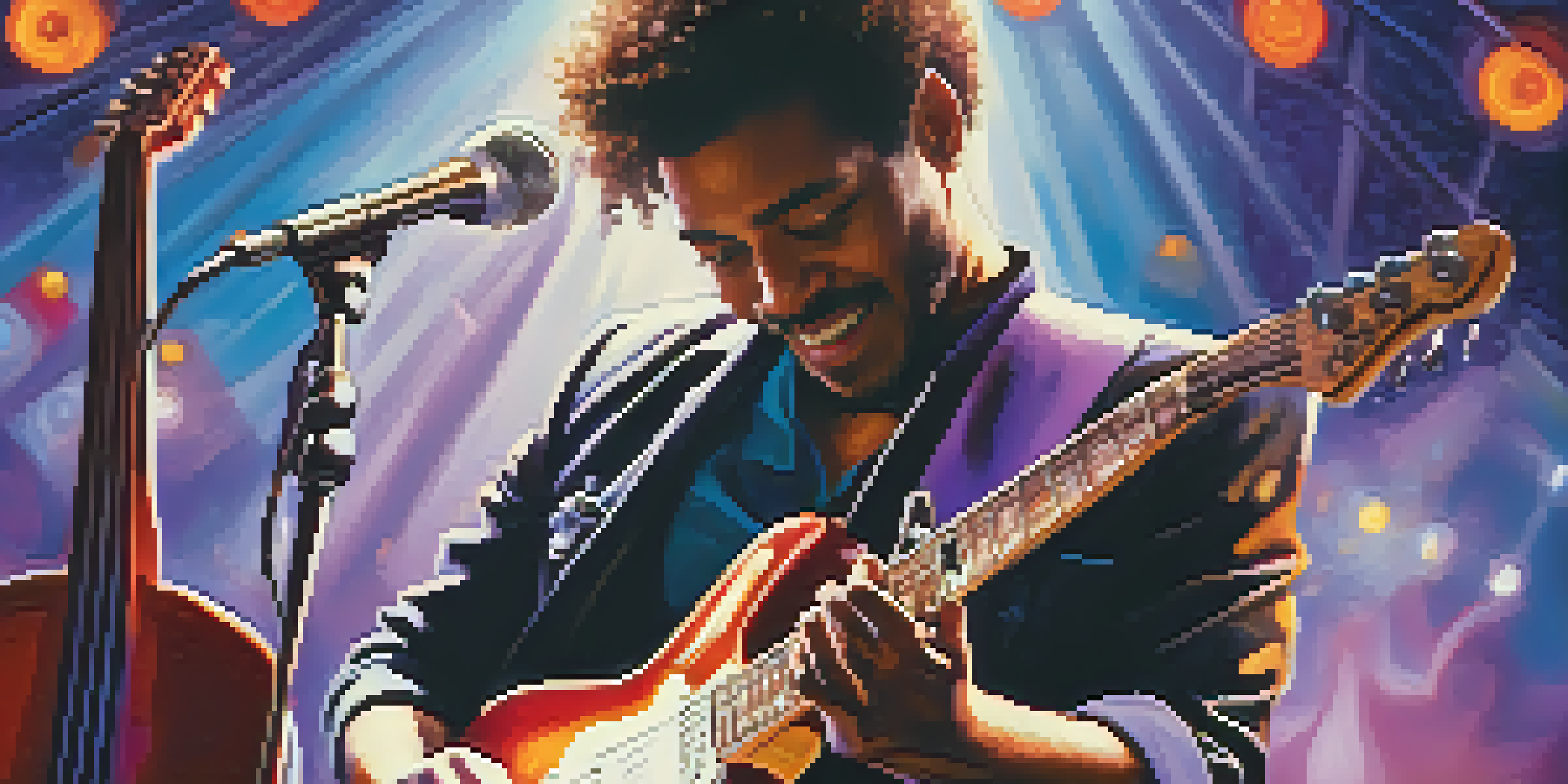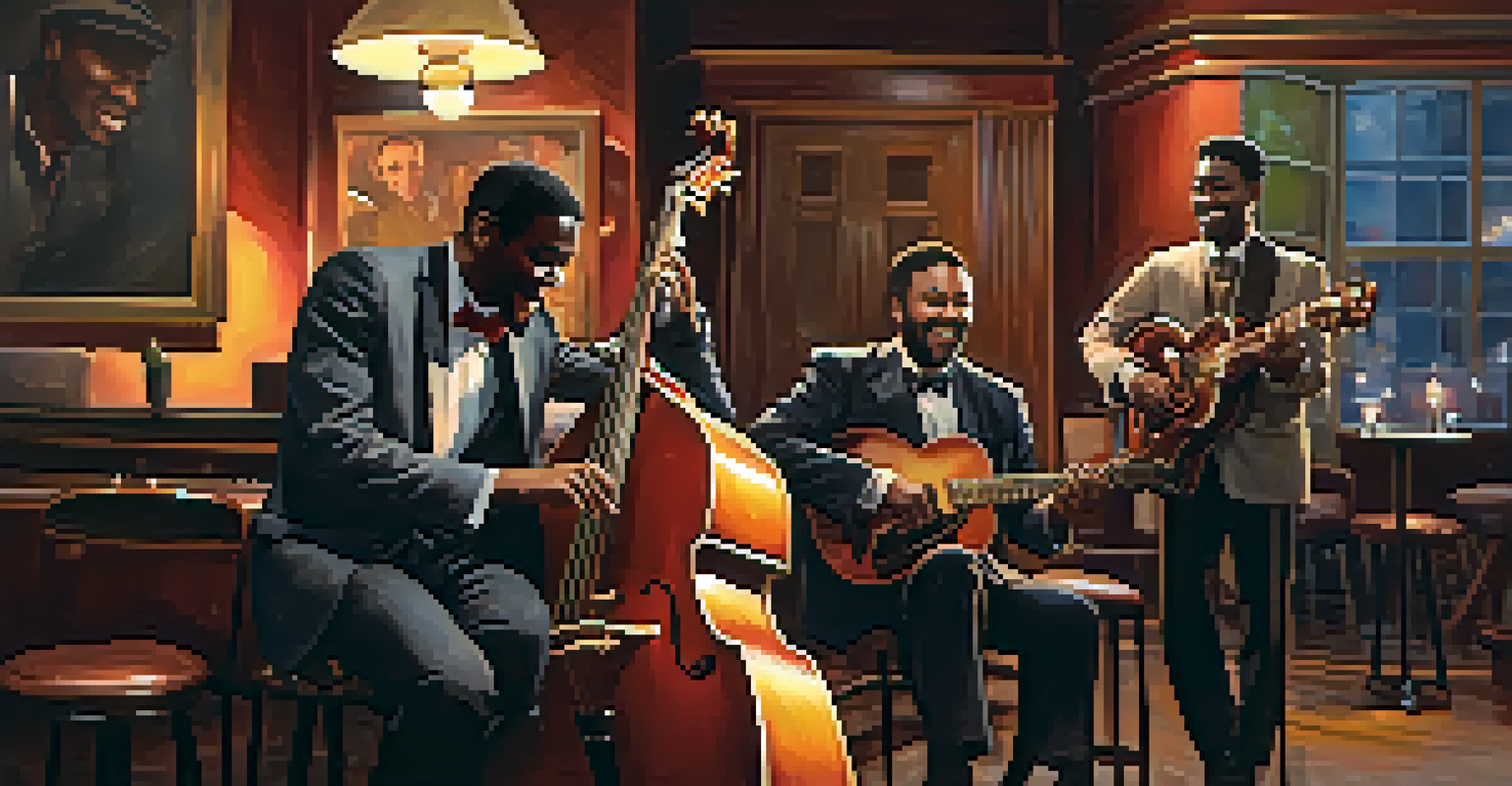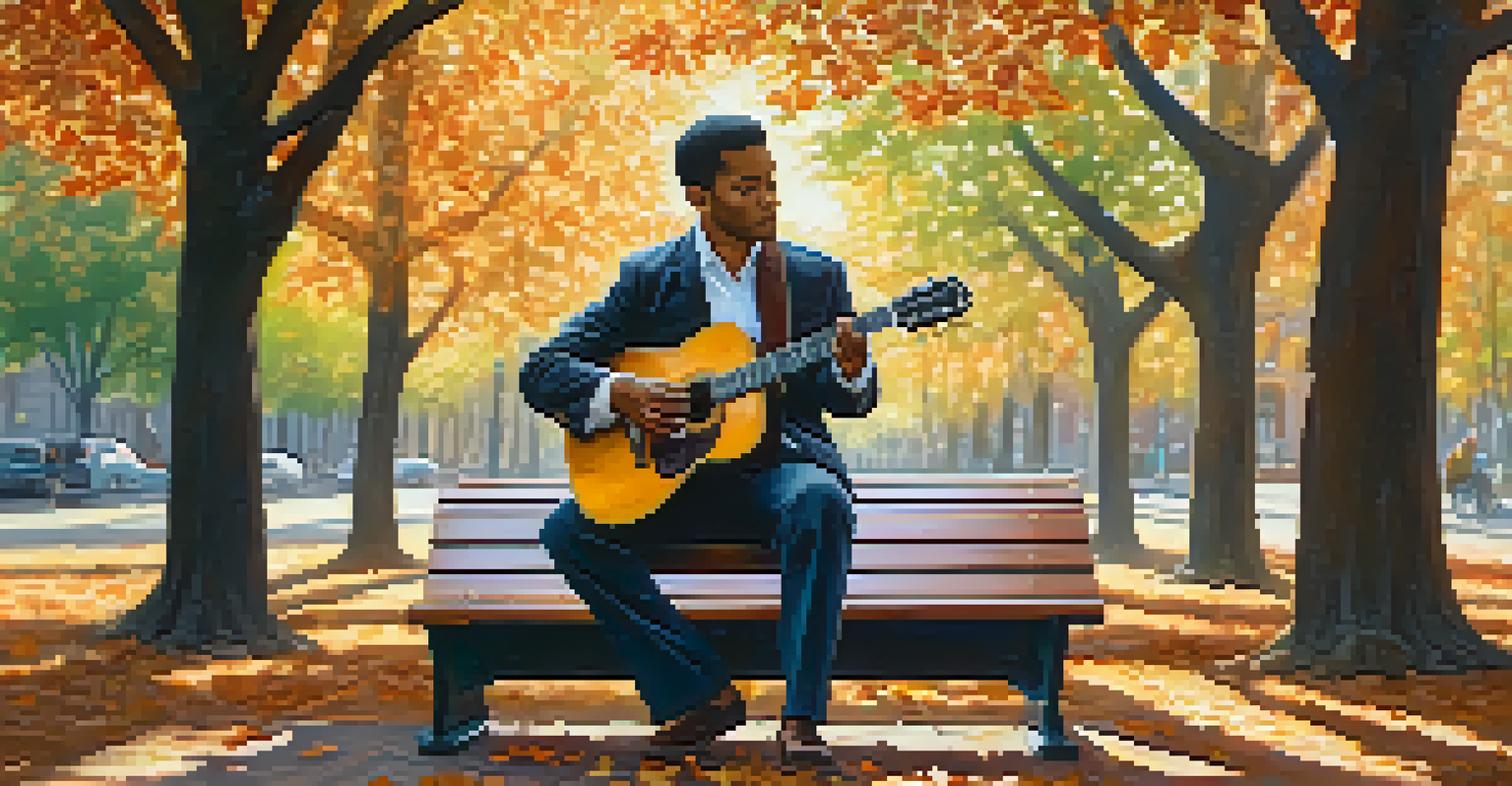The Relationship Between Rhythm and Jazz Guitar Improvisation

Understanding Rhythm in Jazz Music
Rhythm is the heartbeat of jazz music, setting the tempo and mood. It's not just about keeping time; it's the underlying pulse that musicians tap into. In jazz, rhythms can be complex and varied, often incorporating syncopation, swing, and other intricate patterns that create a unique feel.
Rhythm is the soul of music, and it is essential for connection in jazz.
Think of rhythm as the foundation of a house; without it, everything else falls apart. When jazz guitarists improvise, they rely heavily on rhythm to guide their melodic choices. This interplay between rhythm and melody allows for spontaneous creation, making each performance unique.
Moreover, understanding rhythm helps musicians communicate with one another during a performance. It provides a framework for interaction, where guitarists can lock into the groove with the rhythm section, enhancing the overall musical experience.
The Role of Time Signatures in Jazz Guitar
Time signatures are essential in defining the rhythmic structure of a piece. In jazz, you might encounter common time (4/4) or more complex signatures like 5/4 or 7/8. Each time signature brings a different feel and challenges guitarists to adapt their improvisation accordingly.

For example, a piece in 3/4 might evoke a waltz-like feel, encouraging fluid melodic lines. On the other hand, a 7/8 signature can create a sense of urgency and excitement, pushing guitarists to explore unconventional rhythmic patterns. This variety keeps both the musician and the audience engaged.
Rhythm Drives Jazz Music
Rhythm serves as the foundation of jazz, guiding musicians in their improvisation and enhancing the overall musical experience.
Ultimately, mastering different time signatures allows jazz guitarists to expand their improvisational skills. It encourages creativity and flexibility, essential elements for any musician looking to stand out in the jazz genre.
Swing Feel: The Essence of Jazz Rhythm
One of the most defining characteristics of jazz is the swing feel, where the emphasis is placed on the off-beat. This creates a laid-back yet lively groove that is instantly recognizable. Guitarists often incorporate this swing feel into their playing, making their lines feel more dynamic and engaging.
In jazz, the rhythm is the heartbeat of the music. It’s what makes you feel alive.
Imagine the difference between straight eighth notes and swung eighth notes; the latter adds a bounce that brings the music to life. This subtle shift in articulation allows for more expressive improvisation, as musicians can play around with timing and phrasing.
By embracing the swing feel, jazz guitarists can connect more deeply with their fellow musicians and the audience. It transforms a simple melody into an exhilarating experience, where every note carries a sense of movement and energy.
Syncopation: Adding Surprise to Improvisation
Syncopation is a powerful tool in jazz that involves placing emphasis on unexpected beats. This creates a sense of surprise and keeps listeners on their toes. Jazz guitarists often use syncopation to add complexity to their improvisations, making them more intriguing.
For instance, a guitarist might play a phrase that emphasizes the 'and' of a beat, creating a compelling contrast with the established rhythm. This not only showcases their skill but also invites the audience to engage more actively with the music.
Time Signatures Shape Improvisation
Different time signatures introduce unique feels and challenges, encouraging jazz guitarists to adapt their improvisational skills creatively.
Incorporating syncopation requires a solid understanding of the underlying rhythm, as it can easily derail an improvisation if not executed correctly. However, when done well, it elevates a performance and highlights the guitarist's creativity.
Interaction Between Guitar and Rhythm Section
The relationship between the guitar and the rhythm section is crucial in jazz. The rhythm section typically consists of drums and bass, providing the backbone for the music. Guitarists must listen closely to their rhythm section to create cohesive and dynamic improvisations.
For example, a guitarist might lock in with the bass player’s groove, complementing their lines while adding melodic flourishes. This interaction creates a rich tapestry of sound, where each musician contributes to the overall feel of the piece.
Moreover, this collaboration allows for real-time adjustments during performances. If a guitarist senses a shift in the rhythm section's energy, they can adapt their playing to match, fostering a sense of unity and spontaneity that is characteristic of jazz.
Practicing Rhythm for Effective Improvisation
Effective improvisation requires dedicated practice, particularly in developing a strong sense of rhythm. Guitarists can enhance their rhythmic skills by incorporating metronome work into their practice routines. This helps them internalize different tempos and rhythms, making them more versatile musicians.
Additionally, playing along with recordings or backing tracks can provide valuable experience. By improvising over various styles and tempos, guitarists can experiment with different rhythmic approaches, honing their ability to respond to changing musical contexts.
Swing and Syncopation Ignite Creativity
The swing feel and syncopation add dynamic movement and surprise to jazz guitar, allowing musicians to express themselves in engaging ways.
Lastly, transcribing solos from renowned jazz guitarists can reveal how they navigate rhythm in their improvisation. Analyzing these solos allows musicians to discover new rhythmic patterns and incorporate them into their own playing, enriching their improvisational toolkit.
Conclusion: The Unbreakable Bond of Rhythm and Jazz Guitar
In summary, rhythm is an integral part of jazz guitar improvisation that shapes every note played. From understanding time signatures to embracing syncopation and swing feel, the rhythmic component is what makes jazz so vibrant and alive. Without rhythm, improvisation would lack the energy and excitement that defines this genre.
As guitarists continue to explore the nuances of rhythm, they unlock new avenues for creativity and expression. This ongoing journey not only enhances their musical abilities but also deepens their connection with other musicians and their audience.

Ultimately, the relationship between rhythm and jazz guitar improvisation is a beautiful dance—one that invites musicians to explore, experiment, and express themselves in ways that resonate deeply with all who listen.